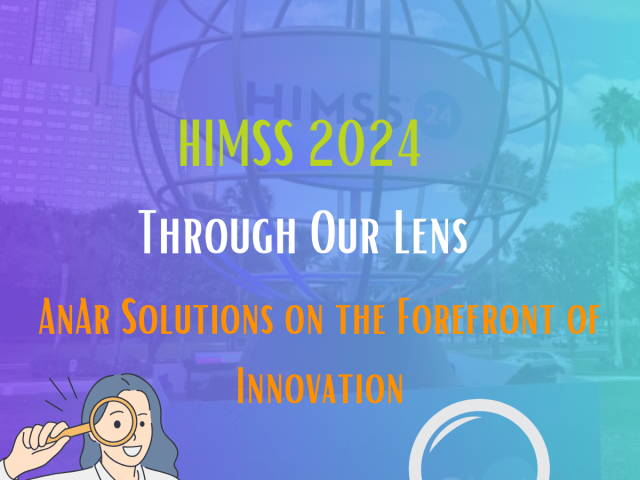Introduction
The success of a software development project hinges on the expertise, reliability, and alignment of the chosen development partner. A partner with a deep understanding of technical intricacies and broader business objectives transforms the engagement into a collaborative venture for shared goals.
In today’s digital landscape, where software is crucial for competitiveness, the development partner becomes an extension of the client’s team. Their ability to grasp the client’s challenges, industry details, and long-term goals establishes a partnership beyond the immediate project. The selection process involves assessing the partner’s ability to align with the client’s vision and contribute meaningfully.
Technology decisions, including the choice of stack, languages, and methodologies, form the foundation of a project’s success. Informed decisions lead to a robust, scalable, and future-proof solution, while missteps can introduce inefficiencies and hinder adaptability.
Emerging technologies like AI, cloud computing, etc emphasize the importance of strategic decisions. The right partner not only possesses proficiency in these technologies but tailors their application to the client’s specific needs. Technology decisions impact the agility, competitiveness, and sustainability of the final product in a rapidly evolving digital landscape.
In this blog we are sharing with some insights on what you should ask before kicking off a project with your software development partner
The initial choice of a software development partner is a pivotal step in your project’s journey. This decision should be underpinned by trust, reliability, and a shared commitment to quality. This comprehensive guide offers an in-depth look into the vital questions and considerations for screening potential software development companies, with a strong emphasis on factors that highlight reliability and trust.
Emphasizing Reliability and Trust in Choosing the Right Software Development Partner
Core Consideration
Trust and reliability form the bedrock of a successful partnership, particularly in software development, where collaboration often transcends geographic and cultural boundaries. It’s crucial to evaluate these elements meticulously to ensure a harmonious and productive relationship.
Expert Insight
Assess indicators of trustworthiness, such as the company’s history, their client retention rates, and ethical practices. Evaluate how they articulate their problem-solving strategies and adapt to project challenges. A partner’s approach to setbacks and their transparency in communication are telling indicators of their reliability. Look for case studies or examples where they have demonstrated resilience and commitment to their clients’ success. Be cautious of companies that shy away from discussing past challenges or fail to provide a clear communication strategy.
Part 1: Screening Potential Software Development Companies
Section 1: Company Background and Experience
Significance
A company’s heritage and domain expertise are critical in assessing its ability to handle your project. This insight sheds light on their industry knowledge, stability in the market, and experience with similar challenges.
Question
“Can you describe your company’s history and experience in software development and the industries or domains you specialize in?”
Expert Insight:
Examine their track record for stability, consistency, and specialization in areas relevant to your project. A company with a history of adapting to industry changes and technological advancements is likely more equipped to handle complex and evolving project needs. Evaluate their answers for depth, specificity, and alignment with your industry requirements. Be wary of companies with a vague or overly broad focus, as this might indicate a lack of depth in any specific area.
Section 2: Assessing Technical Expertise and Specialization
Significance
The technical capabilities of a prospective partner are fundamental to the success of your software project. This assessment helps ascertain whether they possess the necessary technical skills and experience to meet your project’s specific demands.
Question
“What are your core technical competencies and programming languages? Can you provide examples of similar projects you have completed?”
Expert Insight
Prioritize companies with a demonstrable track record in technologies pertinent to your project. Evaluate their technical competency based on specific examples of past projects, particularly those that align with your project’s scope and complexity. Scrutinize their ability to innovate and adapt to new technologies, which is crucial for projects requiring cutting-edge solutions. Be cautious of companies that cannot showcase a relevant portfolio or whose technical expertise seems outdated or misaligned with current industry standards.

Section 3: Understanding Development Methodology and Processes
Significance
The development methodology and processes a company follows dictate the efficiency and success rate of your project. This understanding is crucial for anticipating how your project will be managed, how challenges will be addressed, and how effectively the team will collaborate.
Question
“What development methodologies do you follow (e.g., Agile, Waterfall)? How do you manage project timelines and client communication?”
Expert Insight
Gauge whether their methodologies are a good fit for your project’s scope, size, and complexity. For instance, Agile methodologies are often suited for projects requiring flexibility and ongoing client input, while Waterfall might be more appropriate for projects with well-defined, linear stages. Assess their communication and project management tools, as these are indicative of their ability to maintain transparency and handle complex projects. Be cautious of companies that lack a structured approach to project management or whose communication methods seem inefficient or outdated.
Section 4: Client References and Case Studies
Significance
Client references and case studies are the litmus test of a company’s capability to deliver quality work and navigate through challenges. They provide a real-world perspective on the company’s operational effectiveness and client satisfaction levels.
Question
“Can you provide client references or case studies relevant to our project? How have you addressed challenges in previous projects?”
Expert Insight
Seek out references that specifically align with the nature of your project. Evaluate these references for insights into the company’s problem-solving abilities, client engagement, and project management skills. Pay attention to how they have navigated past challenges and adapted to changing project requirements. Be cautious of companies that are unable to provide recent, relevant testimonials or seem to gloss over the challenges they faced.
Section 5: Post-Development Support and Maintenance
Significance
The longevity and effectiveness of your software project heavily rely on the post-development support and maintenance offered by your partner. This is crucial for ensuring the software remains functional, secure, and adaptable to future needs.
Question
“What kind of post-development support and maintenance do you offer? How do you handle updates and ongoing improvements?”
Expert Insight
Confirm that they provide comprehensive support and maintenance services, including regular updates and troubleshooting. Assess their approach to handling software updates, bug fixes, and scalability issues. It’s important that they have a proactive approach to maintaining and evolving the software post-launch. Be wary of companies that offer limited or unclear post-development support, as this could lead to challenges in maintaining the software long-term.
Section 6: Ensuring Security and Intellectual Property Protection
Significance
In today’s digital age, safeguarding your project’s security and intellectual property is paramount. Understanding a potential partner’s approach to these areas is essential for protecting your interests.
Question
“How do you ensure the security and confidentiality of client projects? What are your policies regarding intellectual property rights?”
Expert Insight
Demand detailed information on their security protocols, data handling procedures, and IP protection policies. Evaluate their commitment to safeguarding client information and ensuring that intellectual property rights are clearly defined and protected. Be cautious of companies that are vague about their security measures or IP policies, as this could expose your project to significant risks.



Part 2: Assessing Understanding of Project Requirements
Section 1: Understanding Project Scope and Deliverables
Significance
The understanding of a project’s scope is paramount for aligning the development partner’s efforts with the project’s objectives. This understanding ensures effective planning, resource allocation, and acts as a safeguard against scope creep, delays, and unforeseen obstacles. Moreover, it is crucial for ensuring that all parties are aligned from the outset, avoiding misunderstandings that can derail a project. A thorough grasp of the project’s scope by the partner is also indicative of their ability to align technical solutions with broader business goals, thereby ensuring that the project contributes to strategic business outcomes like customer engagement and operational efficiency.
Question
“How do you interpret the project’s scope?”
Expert Insight
When evaluating responses, look for detailed understanding and acknowledgment of all project aspects. Responses should demonstrate how the partner plans to meet each element and outcome of the project. Caution should be taken if the partner provides vague or overly general interpretations, as this could indicate a lack of understanding or commitment to your specific project needs. Ensure that their interpretation aligns with your business objectives and that they have a strategy to steer the project in the right direction.
Section 2: Ensuring Project Scope Realization
Significance
Guaranteeing the project scope is met hinges on the partner’s commitment and strategic planning. This involves understanding their project management and quality assurance methodologies. The partner should demonstrate a structured approach, detailing how they plan, allocate resources, and adhere to timelines. Their commitment to quality assurance is equally vital, as it minimizes the risk of defects and ensures that each project milestone meets predefined standards. The ability to adapt and have contingency plans in place is crucial for navigating unexpected challenges without affecting the project’s trajectory.
Question
“How will you ensure that the project scope is met?”
Expert Insight
Assess the robustness of their project management strategy, including their adherence to methodologies like Agile or Scrum, and their approach to quality assurance. Look for detailed steps on how they achieve timely milestones, manage risks, and resolve issues. Be cautious of partners who lack clear project management and quality assurance processes, as this can lead to delays, increased costs, and subpar project outcomes.
Section 3: Technology Stack Selection
Significance
The choice of technology stack is foundational for a project’s success. Early discussions about the technology stack facilitate alignment on crucial technical decisions, helping to mitigate potential risks related to scalability, integration, and future adaptability. The partner’s ability to recommend a technology stack tailored to the project’s specific needs is a testament to their understanding and expertise.
Question
“What technology stack do you recommend for our project?”
Expert Insight
Expect the partner to showcase their expertise by explaining their recommended technology stack, taking into account factors like technical compatibility, project goals, scalability, and past successful experiences. Be wary of recommendations that seem generic or not tailored to your project’s unique requirements. The partner’s ability to provide a well-justified recommendation is crucial for informed decision-making.
Section 4: Assessing Pros and Cons of Proposed Technology Stack
Significance
Understanding the advantages and disadvantages of the proposed technology stack is essential for informed decision-making. This understanding helps in identifying and mitigating potential risks, ensuring the technology choice aligns with project goals and facilitates a smooth development process.
Question
“What are the pros and cons of the proposed technology stack?”
Expert Insight
Evaluate the partner’s honesty and depth of understanding in presenting both the advantages and challenges of the technology stack. A comprehensive analysis should cover scalability, performance, community support, and alignment with project objectives, alongside potential limitations. Beware of partners who gloss over the cons or provide superficial analyses, as this could lead to unforeseen problems during the project lifecycle.
Section 5: Team and Resource Management
Significance
Understanding the composition of the project team is crucial for ensuring efficient collaboration and project success. Knowing the skills and roles of team members helps in assigning tasks effectively and identifying potential skill gaps early on. This knowledge is key for risk mitigation and setting up efficient communication channels.
Question
“Who will be on the project team, and what are their roles?”
Expert Insight
Expect the partner to introduce key team members, their roles, and expertise. This introduction should give you confidence in the team’s capabilities and help establish clear communication channels. Be cautious of partners who are unable to provide detailed information about their team, as this could indicate a lack of organization or transparency, potentially impacting project collaboration and execution.
Conclusion
In choosing your software development partner, a detailed and strategic approach is key. This guide offers you the essential questions and insights to comprehensively evaluate potential partners, focusing on the crucial aspects of trust, reliability, and technical competence.
To assist you further in this critical decision-making process, we invite you to download our specially designed Excel sheet. This tool is tailored to help you effectively compare and vet companies based on their responses to the questions outlined in this blog. Use it to score and rank potential partners, ensuring a clear and organized assessment of each candidate. Don’t miss out on this valuable resource – download it now to take the next confident step toward securing the ideal software development partner for your project.




